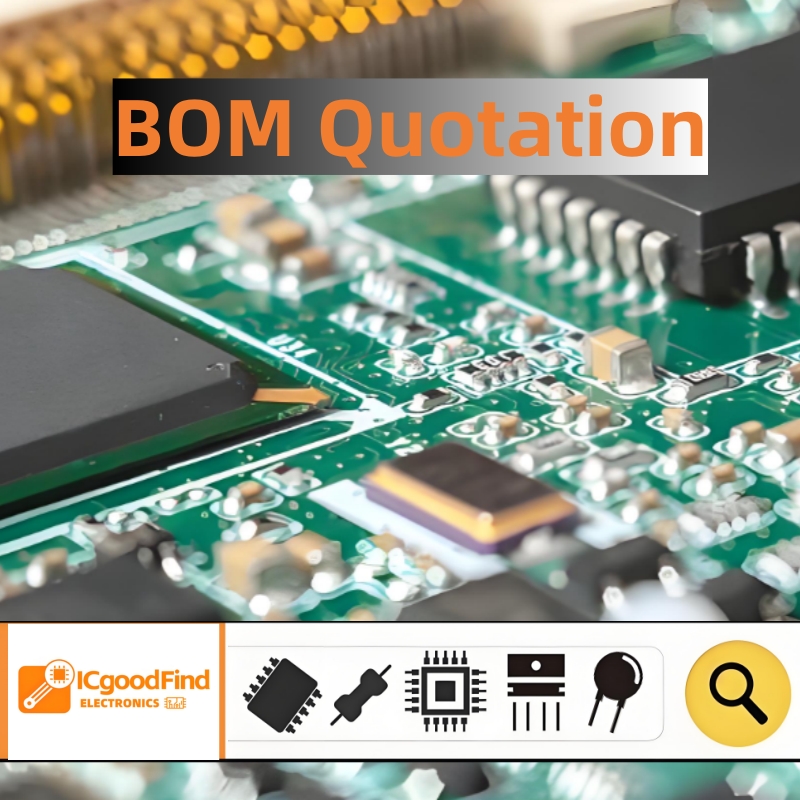**Ultra-Fast, ECL/PECL-Compatible Clock Buffer: A Deep Dive into the ADCLK914BCPZ**
In the realm of high-speed digital systems, the integrity and precision of clock signals are paramount. As data rates push into the multi-gigabit regime, the demand for clock distribution components that can keep pace without degrading signal quality has never been greater. The **ADCLK914BCPZ from Analog Devices** stands as a pinnacle of performance in this arena, representing a state-of-the-art, ultra-fast clock buffer designed for the most demanding applications.
This device is a **single-input, dual-output non-inverting buffer** engineered to handle very high-speed signals. Its primary purpose is to take a pristine reference clock and fan it out to multiple destinations while **preserving the critical timing characteristics** of the original signal. What truly sets the ADCLK914 apart is its **exceptional operating speed**, boasting a propagation delay of just 475 ps and a rise/fall time of a mere 65 ps (20%–80%). This incredible speed ensures minimal added jitter, making it ideal for synchronizing high-speed ADCs, DACs, FPGAs, and serializers/deserializers (SERDES) in systems like optical networking, broadband instrumentation, and high-performance computing.

A key feature of the ADCLK914 is its **native compatibility with LVPECL, LVDS, and CML logic levels**. This flexibility is crucial in mixed-signal environments where different components may operate with different standard logic families. The inputs can accept LVPECL, LVDS, or CML signals directly, while the outputs are configured as LVPECL-compatible. This design simplifies interface design and eliminates the need for additional level-shifting circuitry, reducing both board space and potential sources of signal integrity issues.
The **robust performance of the ADCLK914 is underpinned by its advanced silicon-germanium (SiGe) BiCMOS process**. This technology is the secret behind its ability to achieve both ultra-high speed and low power consumption (consuming a typical 90 mA on a -3.3 V supply). The SiGe process provides the high transition frequency (fT) needed for multi-GHz operation while maintaining the integration benefits and power efficiency of CMOS. The device is offered in a compact 16-lead LFCSP (Lead Frame Chip Scale Package), which is excellent for managing thermal performance and minimizing parasitic inductance in high-frequency layouts.
From an application perspective, designers must pay close attention to proper high-frequency layout techniques to realize the full potential of the ADCLK914. This includes the use of **controlled impedance transmission lines, optimized termination networks, and a solid ground plane**. Any impedance mismatch or poor termination will lead to reflections that can severely degrade the signal's edge quality and increase jitter. Furthermore, excellent power supply decoupling is non-negotiable; placing bypass capacitors extremely close to the power pins is essential to suppress noise and maintain stable operation.
**ICGOOFIND:** The ADCLK914BCPZ is a **high-performance cornerstone for any system requiring flawless clock distribution above 2 GHz**. Its unparalleled combination of **ultra-low jitter, minimal propagation delay, and multi-standard logic compatibility** makes it an indispensable component for engineers pushing the boundaries of speed and precision in modern digital design.
**Keywords:** Ultra-Low Jitter, LVPECL-Compatible, Multi-GHz Clock Distribution, SiGe BiCMOS, High-Speed Buffer.
